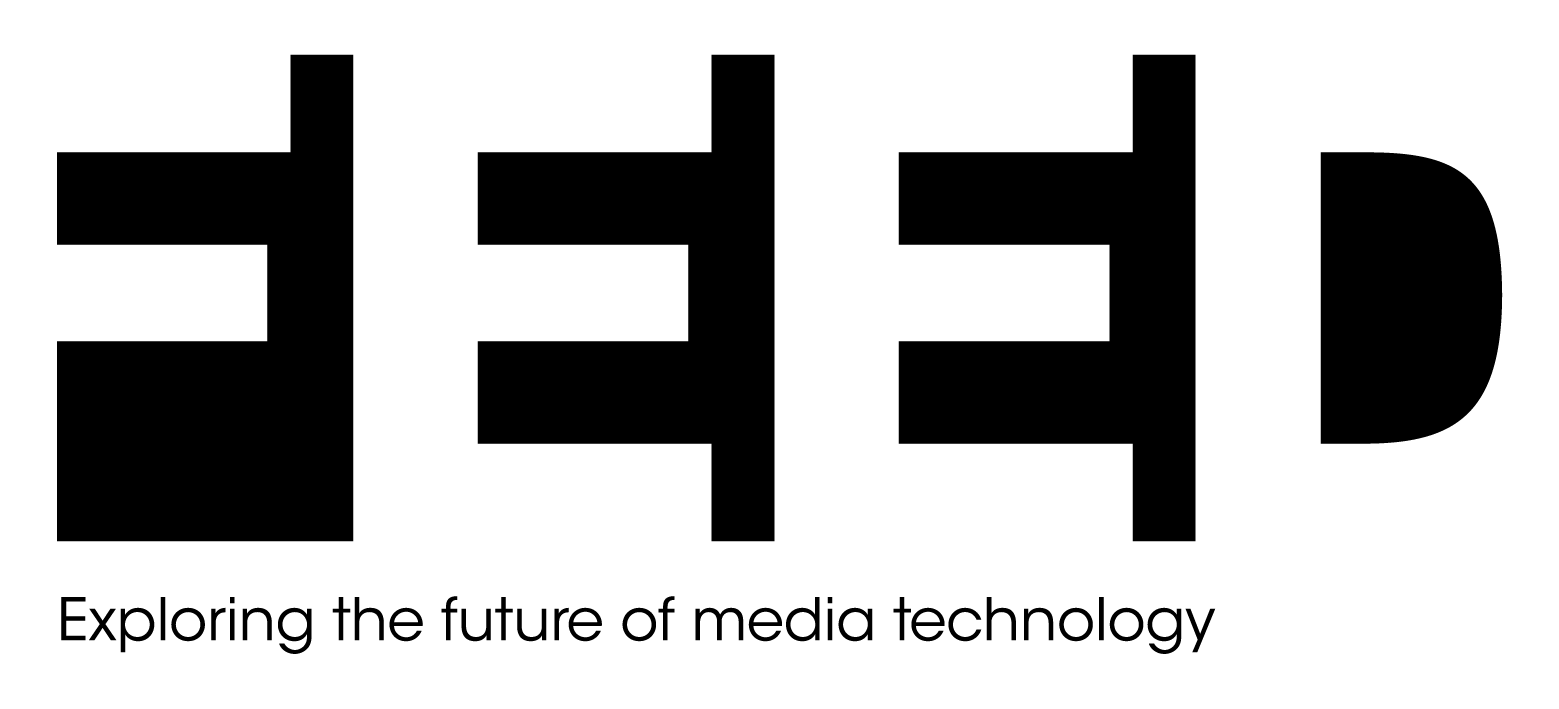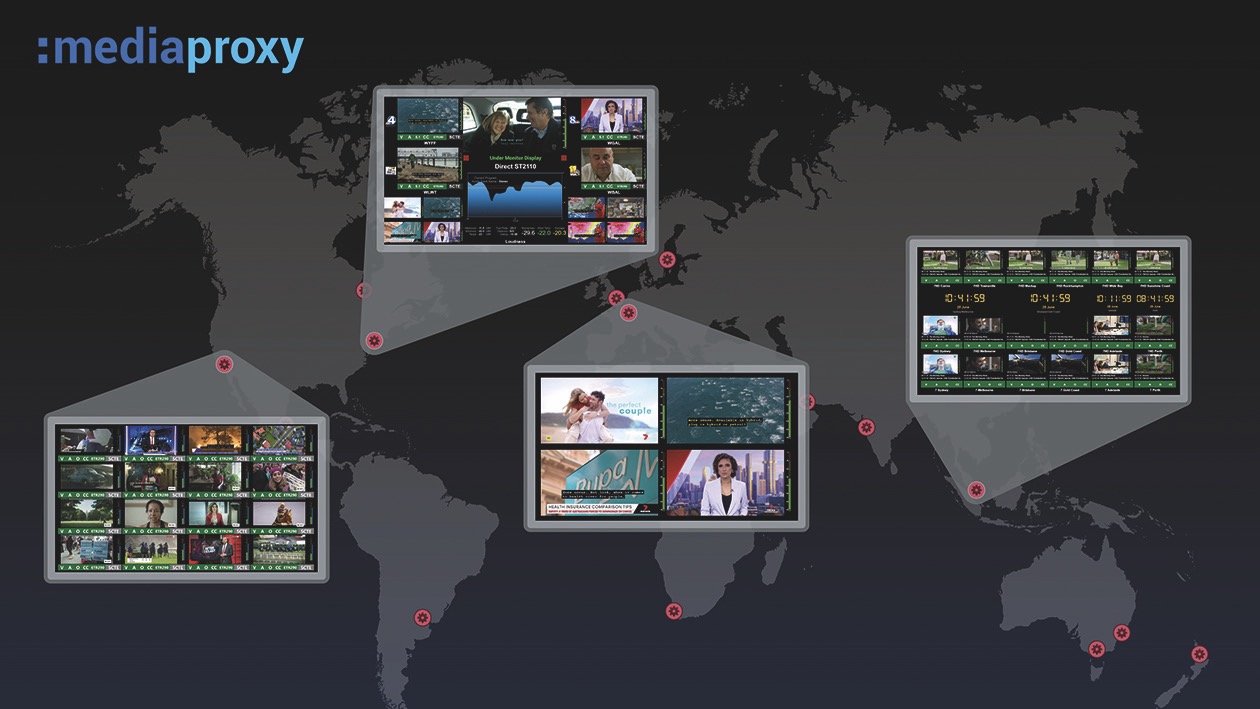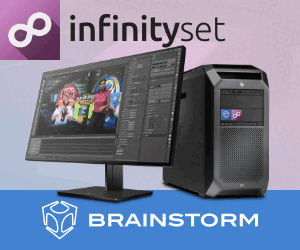A cloud of possibilities

Posted on Jun 3, 2025 by FEED Staff
Behind the scenes of broadcast and streaming, the cloud is quietly reshaping how teams create and deliver content – making it easier to collaborate and keep up with demand around the world
Words by Paul Bray
Maybe it’s no accident that ‘cloud’ is an anagram of ‘could’ – because the cloud, it seems, can do almost anything. It can be a time-saver, a cost-cutter and a world-shrinker, a flexible friend and a business tiger.
Above all, it is an enabler of rapid expansion, smarter working, content discovery, laser-sharp targeting and a myriad of other solutions to the kinds of issues that keep denizens of the C-suite awake at night.
“The cloud has become a Swiss Army knife for production, taking the workflows that traditional broadcasters have used for decades and making them nimble, lightweight and easy to turn on and off,” says Ben Hayes, director of client services at Bitfire. “Cloud-based workflows in broadcast and streaming now span the entire production pipeline.”
If you can name it, you can probably do it in the cloud. Creation, ingestion and editing content, asset management, personalisation and regionalisation, live production, transcoding and delivery across multiple platforms – all are available at the flick of a switch, or at least the ping of a payment.
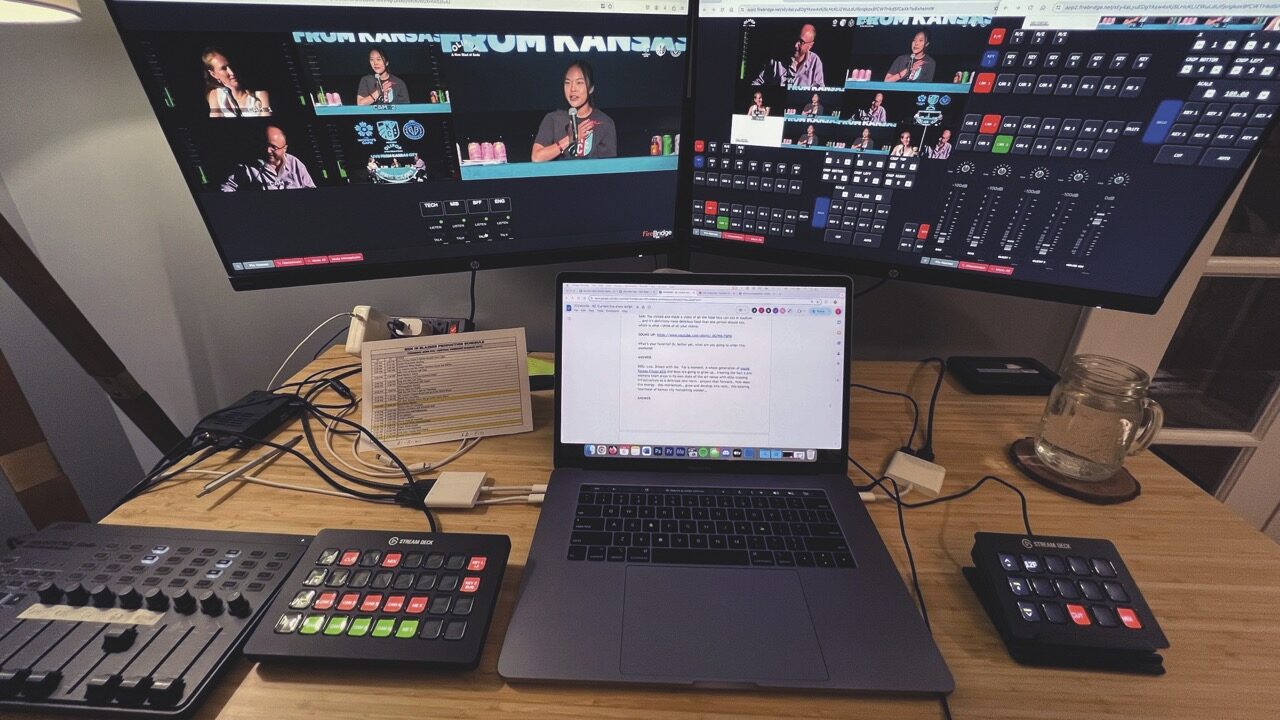
Fashionably late
The IT world embraced the cloud years ago, and most of us use a raft of cloud-based applications – from Google Docs to Microsoft Teams – without a second thought. But broadcasters have come late to the party, and some are only now waking up to the possibilities.
What has changed, according to Dominik Birgelen, CEO of Oneclick, is a confluence of technological maturity and commercial urgency. “A decade ago, cloud technology wasn’t mature enough to support professional media workflows. But today, cloud vendors have upgraded their media-specific capabilities, offering GPU-accelerated processing, near-lossless compression, high-throughput data transfer and ultra-low-latency streaming pipelines.
“In parallel with that, broadcasters are now under pressure to serve fragmented audiences, support multi-format delivery and operate more flexibly, especially in a post-pandemic world where remote collaboration and virtual production are business necessities. And the dramatic rise of AI and cloud-native media tools have made cloud an integral part of a broadcasting ecosystem. It’s no longer a matter of if cloud fits broadcasting, but how fast companies can transform to remain competitive.”
Cloud applications are not necessarily new. “In most cases, they’re the same trusted software platforms that media professionals already rely on, such as Adobe Premiere Pro, DaVinci Resolve and Autodesk Flame,” says Tim Burton, managing director of 7fivefive.
“What changes is the delivery model. These applications are now hosted on powerful virtual workstations in the cloud, connected directly to users. Cloud resources can be scaled and tailored to different creative functions, therefore editors, colourists or producers can work with media from wherever they are, without needing local high-end hardware or duplication of files. By offloading rendering to the cloud, artists and post-production teams can free up time to work on other tasks while rendering what happens in the background.”
Andrew Lokenauth, an analyst and consultant, recently set up a virtual production system for a studio. “It’s an entire green-screen environment rendered in real time through the cloud, where directors can adjust scenes on the fly,” he says.
Because data can be anywhere, so can people. “The cloud enables the sending of live feeds to a broadcast team anywhere in the world,” notes Helen Matthews, senior market analyst for pro video at Futuresource Consulting. “A good example is Riot Games, which hosts esports events across the globe. It has three identical remote production studios – in Asia, Ireland and North America – and all its events are produced in one of these. It means no one has to work unsociable hours, and teams don’t have to spend time and money travelling to each event.”
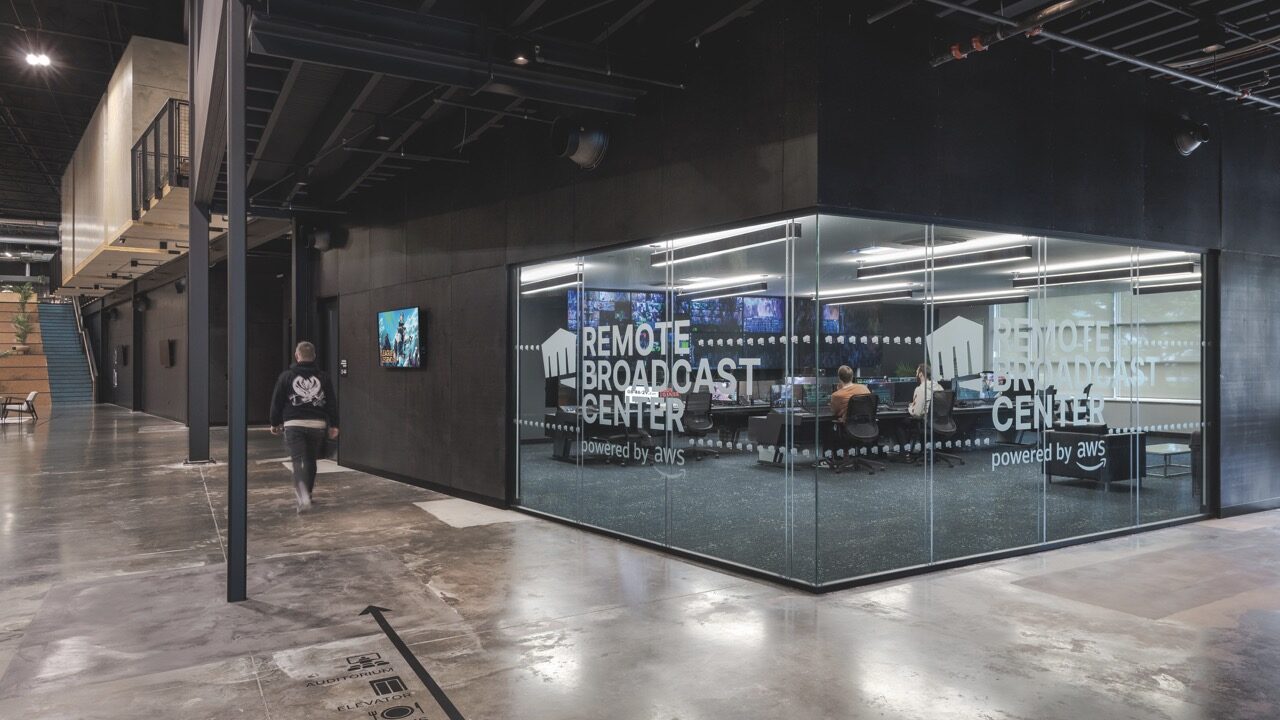
Moving beyond storage
Although there is now far more to the cloud than just data storage, this ‘classic’ function is still important, especially at scale. The BBC, for example, has migrated a whole century of content to Amazon Web Services (AWS), amounting to 25 petabytes of data. “We were able to retire half the archive’s physical infrastructure,” highlights Mark Glanville, senior technical architect in BBC Archives Technology and Services. “This frees up a huge amount of technical space and power in precious real estate in central London.”
Whether archived or newly minted, once content is in the cloud, it can be analysed, indexed and reprocessed by a whole battery of AI-based tools, making it searchable and reusable to an astonishing degree.
“Cloud-native AI integration can enable automated transcription, facial recognition and metadata tagging – tasks that were once manual and time-consuming,” explains Sam Peterson, COO of Bitcentral. “This means hours of content can be processed in near real time, significantly improving asset discoverability and enabling producers to find and reuse content that would otherwise go unseen.”
“AI-assisted tools can deliver tailored advertising and automate multilingual subtitling at scale, which would otherwise be prohibitively expensive or impossible,” adds Venu Iyengar, COO for digital at Planetcast. “While real-time dubbing for live footage still has some way to go, using AI-driven voice cloning and near real-time dubbing for file-based content has made the output not just faster, but creatively superb.”
Lokenauth, too, is seeing huge advances in cloud-based AI for content creation. “I’ve been testing some tools that can automatically create highlight reels based on crowd reactions and player movements, for example. It’s wild stuff.”
Another area that has benefited enormously from the transition to the cloud is playout and distribution. “This is seen in more efficient and widely implemented video-on-demand services and, more recently, live streaming of events,” observes Erik Otto, CEO of Mediaproxy. “A leading example is Amazon Prime Video’s move into live sport, notably Premier League football. With more live programming, streaming services will become more capable of taking on linear broadcasters. Two major advantages of cloud-based playout are the ability to scale a facility’s equipment and infrastructure to fit the number of channels – particularly in terms of adding a new, temporary service for a special occasion – while also managing the content over different platforms.”
Supporting the streamers
The cloud is supporting a tectonic shift in the opposite direction too, from terrestrial broadcasting to online streaming. “Among the big names aiming to do this are France Télévisions and the BBC,” says Otto. “Under its internet-only programme, the BBC intends for some of its channels – including children’s service CBBC and arts/culture network BBC Four – to become completely digital platforms during this year.”
The cloud can even enable media companies to spin up entirely new channels without breaking the bank. “Sky Sports+ launched last year, increasing the quantity of live sport produced by Sky by 50%,” explains Scott Kewley, CEO of Techex. “The launch was rapid, and the scale-up in workload, Sky states, was only possible by leveraging the cloud, using its on-demand nature to complement the event-driven nature of sport. Only by using the cloud, and thus software-defined workflows, was Sky able to deliver this without increasing the subscription cost.”
News providers – for whom speed and quality are of the essence – have embraced the cloud with a will. “It’s never been more difficult to make money through news, and there’s more pressure than ever on news organisations to monetise their programming and platforms,” says Koji Andachi, head of media solutions marketing at Sony.
“IP connectivity and the cloud have become crucial to everyday workflows, providing the scalability and accessibility needed to take more of a story-centric approach to news production and address the multichannel consumption habits of today’s audiences. Complex tasks such as reformatting and tagging are now being simplified, so creating and distributing media content across multiple channels at once is becoming easier – from news channels and streaming platforms to social media and podcasts.”
At Reuters, Sony’s Hive news production platform lets bureaux around the world collaborate on stories across different time zones.
“In the past, news production has often been quite siloed,” reveals Rob Lang, global production editor at Thomson Reuters. “You have a team in a bureau with the infrastructure around them, producing content
and sending it into the centre.”
Aside from the obvious costs and complexity of building and maintaining disparate systems, this fragmentation can cause bottlenecks both for dispersed journalists and any production teams wishing to access and share content.
“We wanted to move away from the idea of having satellites and a centre to create a global newsroom, where once content has been shot, it’s immediately available for everyone who needs it to start working on,” explains Lang. “That’s why we went for a cloud-based production system.”
The Hive system allows Reuters news crews on the ground to focus on getting the story and shooting the content, without worrying about the ‘bureaucracy’ of metadata tagging, creating scripts, verification etc, and quickly feeding it into the global newsroom for immediate use.

Championing sports
An equally eager adopter of the cloud is sports. As part of a larger cloud migration, for example, Sky built a software-defined encoding (SDE) platform based on Amazon’s Elastic Kubernetes Service. It replaced three separate, on-premises, appliance-based pipelines used by Sky teams in the UK, Italy and Germany to prepare content for distribution to a wide range of channels (satellite, terrestrial, OTT etc), which were proving cumbersome and expensive.
“Handing off Kubernetes cluster management to AWS allows our team to focus more time on the video application layer,” remarks Davide Gandino, Sky’s head of group distribution. “We’re also able to pay only for the tools we’re using, which is huge. We can scale up and down in minutes, which is very cost-efficient and allows us to quickly execute new ideas. For instance, we can prepare hundreds of different camera angles for audience consumption, as we recently did with Formula One.”
Multiple camera angles present an opportunity to give audiences more control over how they view content – one of the holy grails in today’s ever-tougher war for eyeballs. “We want to give audiences exciting new features that put them in the director’s chair, and having a cloud-native SDE platform frees us from traditional hardware constraints,” adds Gandino.
Being a multi-regional deployment, the new platform also serves as a disaster-recovery solution. Previously, on-premises set-ups took minutes or even hours to spin up; now, recovery is near-instant, according to Gandino.
It is now feasible to broadcast professional sports matches entirely from the cloud, as the National Hockey League (NHL) proved last year when the Washington Capitals took on the Carolina Hurricanes in Washington DC, using technology from AWS.
“We’re abstracting the truck from the broadcast and sending camera feeds to the cloud,” reports Grant Nodine, the NHL’s SVP of technology. “Live cloud production (LCP) allows you to have an unlimited number of outputs, just governed by how much compute you want to dedicate to it.
“It enables us to break down the components of a broadcast and realise some of the ancillary benefits, particularly replay. There’s no reason I can’t cut near-live melts and have them available instantly to anyone from the cloud. We can produce a crafted highlight for each game that’s shared on every platform – digital, social or broadcast. We can make content available on one platform and have all these components talk to each other in near-real time, without having to buy most of the actual hardware.”
The inaugural live broadcast feed was produced from a temporary control room in the NHL Network studios in New Jersey, while another team cut the stats-enhanced feed with live studio talent from a control room at the NHL headquarters in Manhattan. Just one AWS employee was present at the game to help co-ordinate feeds and troubleshoot technical issues. A live sports production of this size would typically require at least one production truck and 20 people on site, generating more than two tonnes of CO2, so the cloud production was greener and saved on travel too.
By combining LCP technology with advanced analytics, the NHL is able to enhance the fan experience, providing more insight, information, analysis, camera views and statistics during the broadcast.
“We’re going to take one NHL game and create multiple broadcasts to address all fans interested in more of a lifestyle experience, or those looking for a stat-heavy production,” expresses David Lehanski, the NHL’s EVP of business development and innovation. “Cloud production is going to be at the fore of our fan development around the world.”
The cloud’s silver linings
The cloud is not just for big brands. It can also be a godsend to start-ups, like Warsaw-based company Klik Lekarz.
“We use a mix of cloud-based tools across the production pipeline,” says the firm’s content creator, Natalia Szubrycht. “For collaboration and feedback, we rely on Frame.io for real-time video review with sponsors and editors. For remote editing and media storage, Blackmagic Cloud allows shared project files and timeline syncing across locations. For live events, we use cloud encoders and virtual production tools to stream directly to YouTube, Twitch and branded platforms – managing overlays, graphics and viewer interactions from the cloud.
“Cloud services dramatically reduce the need for high-end local hardware and allow flexible collaboration. I can onboard new team members instantly, scale up production without investing in new infrastructure and work from anywhere with a stable connection. Turnaround times are shorter, and it’s much easier to maintain version control on shared assets.
Making more with less
“Professional remote multicam editing and live streaming with dynamic overlays would have been unthinkable without a full crew and studio just a few years ago. Now, I can produce high-quality branded content and
live events from a laptop.”
Szubrycht finds that the primary challenges of the cloud are bandwidth and data security. “Large media files require fast upload speeds, so we’ve invested in redundant internet connections and cloud-optimised formats to streamline uploads. For security, we implement two-factor authentication and cloud encryption, and limit access privileges to those who need them. Training collaborators on secure file handling is also crucial. We’ve also upgraded our network set-up and added a local NAS system as a hybrid backup.”
Overall, the cloud has made the company’s production pipeline far more nimble and scalable. “It enables real-time content creation and distribution for brand partners – which is a major competitive edge. It’s also allowed us to take on more ambitious projects with minimal overhead, expand globally without opening new offices and diversify by offering remote production services. In a fast-paced digital media landscape, this flexibility is key to staying relevant and profitable.”
One piece of advice for newbies? “It’s a mindset shift,” concludes Szubrycht. “You need to think of the cloud not just as storage, but as the backbone of an agile production ecosystem.”
Olympic proportions
No task is too large for the cloud, it seems. At last year’s Olympic Games in Paris, cloud became the main method of remote distribution to broadcasters, displacing the satellite technology that had dominated for 60 years. “The system fully realised the benefits of cloud technologies, including operational scalability, cost efficiency, improved sustainability with enhanced remote working capabilities and effective real-time workflow collaboration,” says Dongliang Guo, VP of international business at Alibaba Cloud. “It also meant less equipment and resources, shorter set-up times and more flexibility for broadcasters.”
During the Games, two-thirds of booked remote services, across 54 broadcasters, used the OBS Live Cloud, which transmitted 379 video and 100 audio feeds.
“OBS’s Content+ content delivery platform – hosted on Alibaba Cloud – simplified remote production workflows and ensured seamless content delivery, including live sessions, athlete interviews, behind-the-scenes footage and social media content,” adds Guo. “Broadcasters could create their own highlights from any location in a far shorter turnaround time, and content could be downloaded in three different resolutions, facilitating usage including linear, digital and social media.”
A multicamera replay system provided 360°, frame-freeze slow-motion replays. “Footage was sent to the cloud, where Alibaba Cloud’s AI-driven computing capabilities enabled live spatial reconstruction and real-time 3D rendering,” notes Guo. A cloud-based, AI-powered media archiving solution also provided enhanced visual searches, auto categorisation of multimedia content and video highlights.
Building a hybrid infrastructure
Eventlive Pro, which specialises in livestreaming private events, has a cloud-native platform designed from the ground up to combine the scalability, flexibility and global reach of cloud with the transcoding performance of dedicated hardware.
“Content delivery networks are a key component – global networks of computers that cache your content and bring it closer to your users worldwide,” says Eventlive Pro’s CTO, Mark Sergienko. “We use a blend of Cloudflare, BunnyCDN and Amazon Cloudfront.”
For video storage and archiving, the company uses Amazon S3. “It’s a gold standard for object storage on the internet with unmatched reliability and a standard price of $23 per TB per month,” continues Sergienko.
However, in order to reduce egress costs, Eventlive Pro also uses compatible alternatives for different asset classes and secondary backups, including Amazon S3 Glacier, Cloudflare R2, Backblaze B2, Digitalocean Spaces and Vultr.
“Choosing the right CDNs and object storage is critical to balancing cost, performance and reliability in video streaming, optimising for affordability and global reach,” adds Sergienko.
Not all of Eventlive Pro’s infrastructure is in the cloud, however. “We did use cloud servers for their flexibility (on-demand provisioning, autoscaling and per-minute billing) and still use them for non-transcoding needs,” says Sergienko. “But they couldn’t match the performance per dollar you get with dedicated hardware, so now we rely on dedicated, ‘bare-metal’ servers for transcoding live streams.”
This article first featured in the Summer 2025 issue of FEED magazine.
